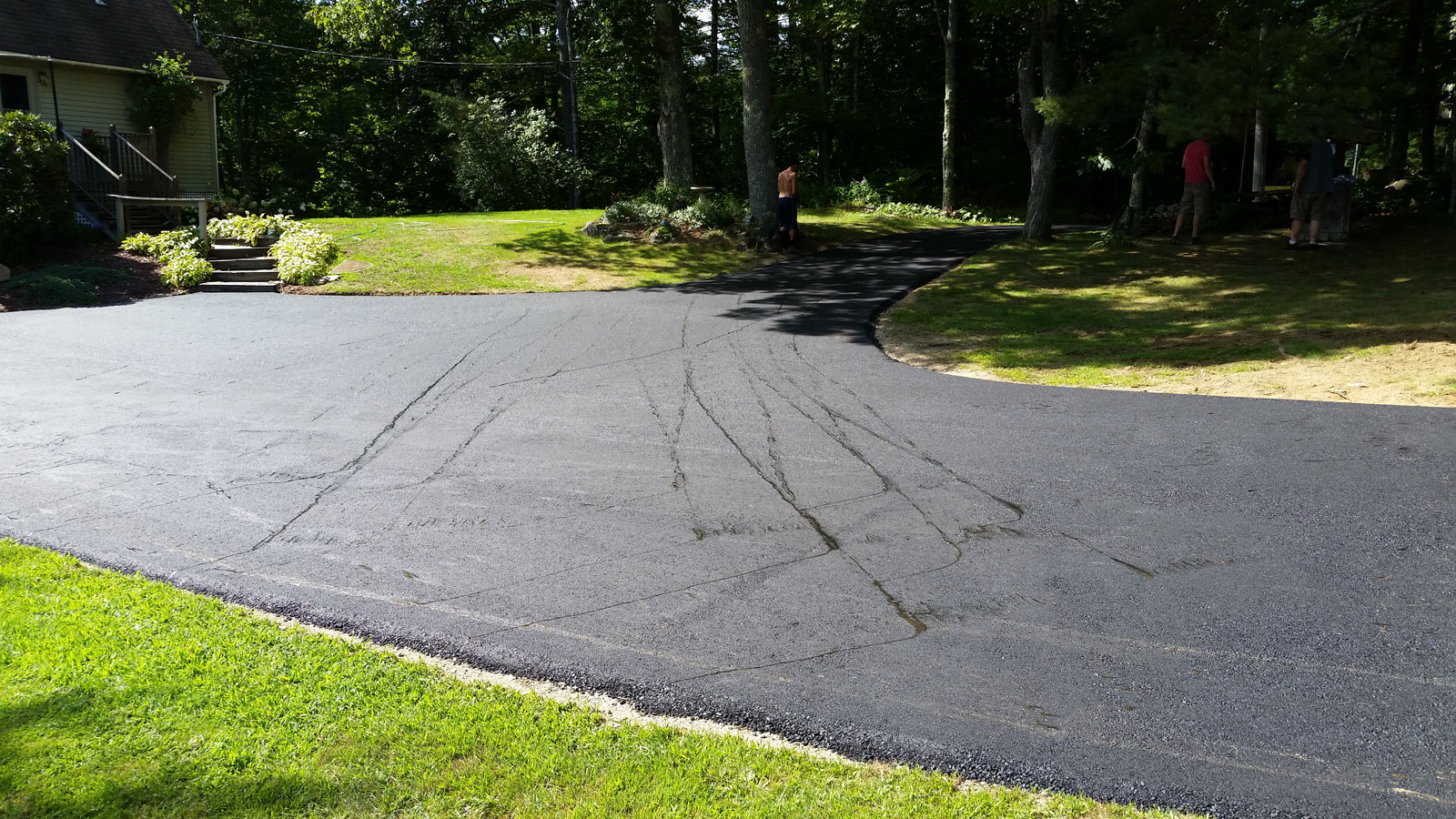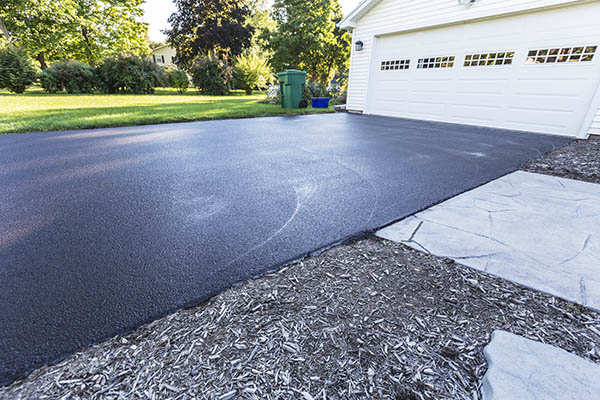Renew Your Residential Or Commercial Property with Regrading and Asphalt Sealing Strategies
Renew Your Residential Or Commercial Property with Regrading and Asphalt Sealing Strategies
Blog Article
Hot Mix Asphalt: A Sustainable Remedy for Sidewalk
Hot Mix Asphalt (HMA) has actually arised as a leading lasting option for pavement solutions, using a myriad of innovative technologies and ecological benefits. Its ability to reuse materials and minimize energy consumption provides a compelling case for its adoption in road building and construction tasks. The long-lasting efficiency and resilience of HMA make it a preferred choice for framework growth. As the need for green building and construction methods expands, checking out the nuances of HMA's sustainability can offer useful insights into the future of sidewalk services.
Ecological Advantages of Hot Mix Asphalt

Furthermore, Hot Mix Asphalt helps to alleviate urban heat island results. Its dark shade takes in sunshine, lowering the quantity of warmth reflected back into the environment compared to lighter-colored sidewalks. This can decrease ambient temperatures in metropolitan locations, decreasing the need for air conditioning and ultimately lowering power consumption.
Furthermore, Warm Mix Asphalt adds to boosted stormwater management. Its permeable nature permits water to reenergize and penetrate the sidewalk groundwater materials, minimizing drainage and the threat of flooding. These environmental benefits make Hot Mix Asphalt a lasting choice for leading freeways and roads.
Power Efficiency in HMA Manufacturing
Is energy performance a crucial aspect in the manufacturing of Hot Mix Asphalt (HMA)? Power plays a considerable duty in the production of HMA, impacting both cost and environmental sustainability. One essential element of energy efficiency in HMA production is the use of cozy mix asphalt (WMA) innovations.
Additionally, innovations in plant modern technologies have actually brought about even more energy-efficient HMA manufacturing processes. Modern plants are made with features like recycled asphalt pavement (RAP) handling capabilities, reliable burner systems, and improved insulation, all contributing to power cost savings. By maximizing energy use in HMA production, the sector can minimize its carbon footprint while maintaining top quality pavement products. Energy effectiveness is, for that reason, an essential factor to consider in ensuring the sustainability of Warm Mix Asphalt production.
Recyclability of Hot Mix Asphalt
The recyclability of Warm Mix Asphalt (HMA) is a crucial element of its sustainability and long-term environmental effect. HMA is one of the most recycled materials in the USA, with over 100 million tons of redeemed asphalt sidewalk (RAP) being reused every year in new sidewalk building and construction. Reusing HMA supplies numerous ecological benefits, such as minimizing the need for virgin products, decreasing power consumption during production, and decreasing the quantity of waste sent to land fills.
The procedure of recycling HMA involves grating the existing sidewalk, crushing it into smaller items, and mixing it with brand-new accumulation and asphalt binder to create a recycled mix. This recycled mix can commonly carry out along with or even far better than standard HMA, while requiring fewer resources and creating reduced this link greenhouse gas discharges. By including RAP into brand-new sidewalk projects, road companies can preserve natural deposits, decrease costs, and lessen the environmental impact of roadway building and construction and upkeep activities. In general, the recyclability of HMA plays a considerable duty in advertising lasting methods within the pavement sector.

Long-Term Efficiency of HMA
Asphalt pavements demonstrate longevity and durability over a prolonged duration, mirroring the lasting performance of Hot Mix Asphalt (HMA) The durability of HMA can be attributed to its ability to endure rush hour tons, harsh weather, and the impacts of aging. Studies have revealed that well-designed and effectively constructed HMA sidewalks can last for two decades or even more with routine upkeep. The trick to maximizing the lasting efficiency of HMA depends on making use of premium materials, complying with ideal practices in building, and executing efficient maintenance techniques. Proper water drainage, routine evaluations, and timely fixings are vital for maintaining the structural integrity of HMA sidewalks with time. Furthermore, advancements in HMA modern technology, such as making use of polymer-modified binders and warm mix asphalt, have further enhanced the resilience and longevity of HMA pavements. By focusing on quality building and construction and upkeep techniques, HMA remains to verify itself as a lasting and economical option for lasting pavement framework.

HMA: Resilience and Sustainability
Showing both resilience and sustainability, Hot Mix Asphalt (HMA) has ended up being a keystone in the building of resilient pavement frameworks - commercial parking lot paving. HMA's sturdiness comes from its capacity to withstand hefty loads, harsh weather, and high web traffic quantities, making it a trusted selection for highways, highways, look what i found and airport terminal runways. The composition of HMA, which generally includes accumulations, binder, and filler, plays a crucial duty in improving its long life and resistance to tear and put on
In addition, HMA's sustainability exists in its recyclability and energy-efficient manufacturing process. The capacity to recycle reclaimed asphalt pavement (RAP) in brand-new HMA mixes decreases the demand for virgin materials and reduces the ecological impact of pavement construction and upkeep. Additionally, the power effectiveness of generating HMA depends on its lower blending temperature levels compared to various other pavement materials, resulting in reduced power usage and greenhouse gas discharges.
Conclusion
To conclude, warm mix asphalt (HMA) uses a sustainable service for sidewalk with its eco-friendly attributes. HMA's recyclability, energy efficiency in manufacturing, and long-lasting toughness make it an eco-friendly choice for road construction. By conserving natural deposits, minimizing waste, and reducing greenhouse gas emissions, HMA plays an important role in promoting sustainability in infrastructure growth. Its capability to more helpful hints alleviate city warm island results even more underscores its value in producing environmentally mindful and resilient pavement systems.
HMA is one of the most recycled products in the United States, with over 100 million lots of redeemed asphalt sidewalk (RAP) being reused every year in brand-new sidewalk building.The process of recycling HMA involves grating the existing pavement, squashing it into smaller pieces, and mixing it with new aggregate and asphalt binder to produce a recycled mix.Asphalt sidewalks show durability and resilience over an extensive period, mirroring the lasting performance of Hot Mix Asphalt (HMA) Additionally, improvements in HMA technology, such as the usage of polymer-modified binders and warm mix asphalt, have even more enhanced the toughness and durability of HMA sidewalks. The capacity to reuse recovered asphalt pavement (RAP) in brand-new HMA mixes minimizes the need for virgin materials and lessens the environmental influence of sidewalk building and construction and upkeep.
Report this page